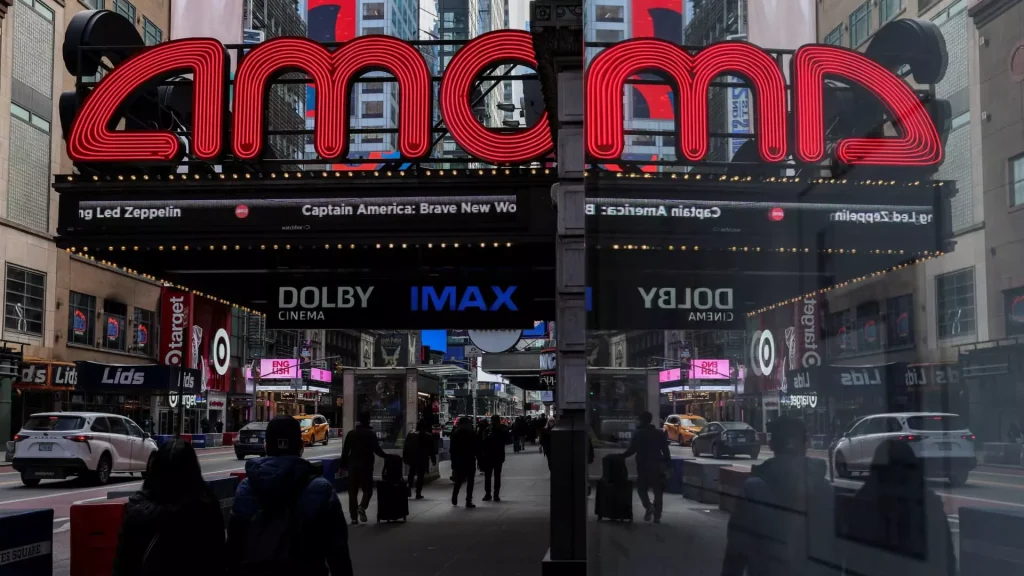In the dynamic world of cinema, the desire for premium movie experiences is driving a significant transformation. AMC Entertainment, the world’s largest cinema chain, is strategically amplifying its offerings by introducing 40 new Dolby Cinema screens across the United States by the end of 2027. This marks a notable 25% increase in their premium branded screens, totaling over 200. This expansion is not merely a response to increased demand; it is a calculated move to redefine the cinematic experience in an ever-competitive market.

AMC’s CEO, Adam Aron, underlined the company’s commitment to quality by stating that this partnership with Dolby reinforces their goal to provide moviegoers with elevated experiences. The implication is clear: as Hollywood churns out more blockbusters, which are optimally experienced in advanced screening formats, AMC is positioning itself as a frontrunner in a cultural shift that prioritizes high-quality viewing.
Embracing Technological Advancements
The technologies incorporated into these premium formats are transformative. Dolby Cinema, for instance, combines cutting-edge Dolby Vision and Dolby Atmos technologies, which together create not just a more visually stunning experience but an auditory landscape that can be profoundly immersive. This is not just about watching a movie; it’s about being enveloped in the film’s world. Likewise, Screen X, with its expansive 270-degree panoramic presentation, and 4DX, which adds a kinetic component to screenings with motion and sensory effects, represent cinema’s venture into full-dimensional storytelling.
As filmmakers increasingly tailor their content for these formats, audiences have begun to yearn for a more engaging and visceral cinema experience. It is not incidental that films like “Oppenheimer” and “Avatar: The Way of Water” have significantly benefited from their presentation on premium screens. Such titles thrive on visual spectacle — something desperately sought after in today’s fast-paced entertainment landscape.
The Economic Incentive Behind Premium Pricing
Let’s address the elephant in the room: ticket prices. Premium movie tickets hover around $17—upwards of an 8% increase since 2021. To the average moviegoer, this price point may seem exorbitant, especially for families or those on a budget. However, for many cinemas, particularly AMC, this represents a necessary shift towards sustainability in a time where traditional ticket sales are faltering. Additionally, PLF (Premium Large Format) screens have accounted for an increasingly large share of box office revenue, contributing to a substantial $600 million according to recent data.
This increase in prices can be justified: audiences today are looking for experiences that transcend passive viewing. The willingness to pay more highlights a cultural readiness for premium experiences; moviegoers are not simply purchasing tickets—they are investing in memories, excitement, and, ultimately, an escape from the mundane.
Blockbuster Frenzy and Audience Expectations
Upcoming narratives in cinema will see major franchises like Marvel, Star Wars, and Jurassic Park competing against each other, resulting in an overcrowded marketplace. Within this landscape, audiences have become extremely discerning regarding how they spend their time and money. As tech-savvy consumers with high expectations, they are drawn to films that promise not just storytelling, but a spectacle that they can cherish.
The increasing popularity of PLF screens reflects a cultural shift in how audiences perceive value in cinema. As trends continue to unfold, the cinema experience will likely take on even more nuanced forms, integrating technological innovations to meet audience expectations.
A Reaffirmation of Cinematic Experience
Critics may argue that the rise of streaming services has contributed to a culture devaluing the theatrical experience. However, AMC’s aggressive expansion into premium formats reaffirms that there is still a significant appetite for theatrics in cinema. The company recognizes that it cannot merely rely on conventional screenings to lure audiences back; rather, it must innovate and cater to the desires for an experience that can’t be replicated at home.

This is not just good business — it’s a bullish statement about the future of cinema as a celebrated cultural medium. In a world that often seems to prioritize convenience over experience, AMC’s strategy pushes back against the tide, asserting that the magic of film is best experienced in immersive environments that engage all senses.

